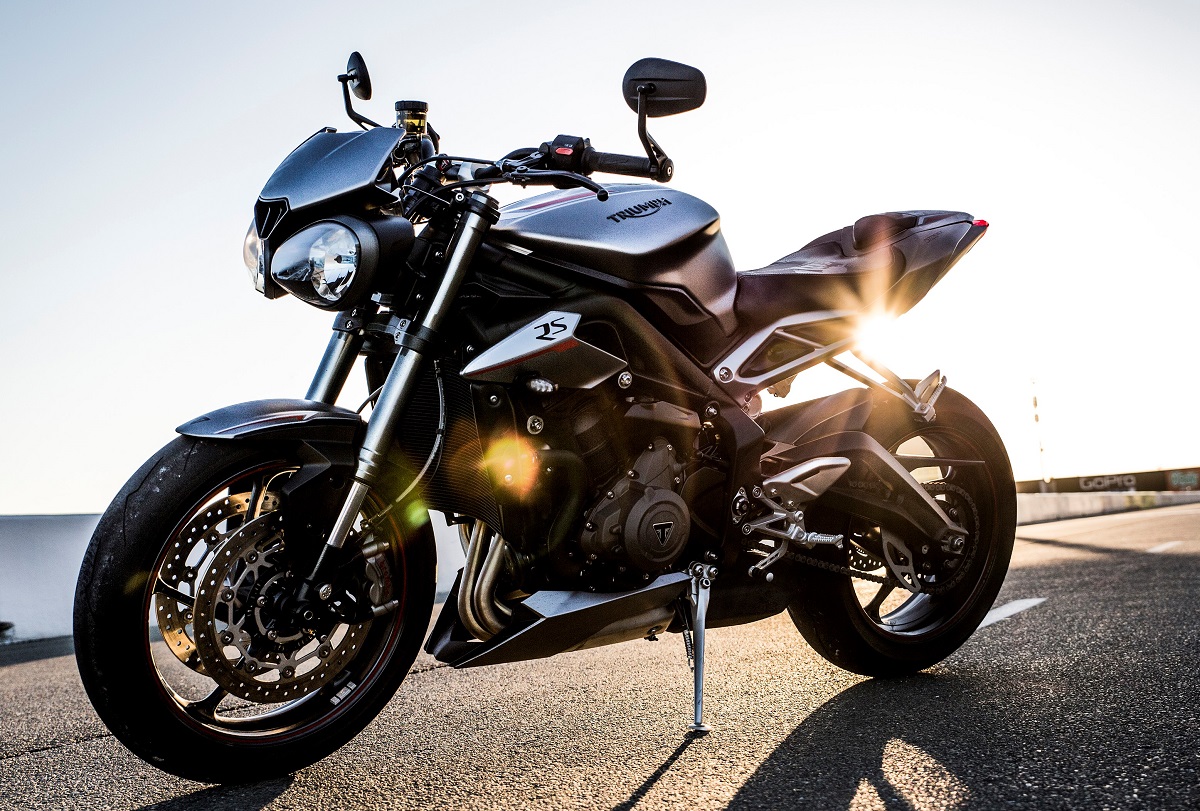
Triumph updated one of its most popular models, the Street Triple, with a new engine and other refinements for 2018.
On paper, the 2018 Triumph Street Triple RS looks like just about the perfect motorcycle for me. It seems to combine the best attributes of the three motorcycles I currently own — only better in every category.
It is the descendant of my 1997 Speed Triple, but improved by any measure except, arguably, looks. The benefit of 21 years has made the Street Triple RS lighter, more powerful, more nimble and far more sophisticated, especially in terms of electronics. It is also a descendant, in a way, of my 2006 Daytona 675. That was the first example of the 675 cc Triumph triple that remains one of my all-time favorite engines, only the new 765 cc Street Triple makes more power and broader torque and doesn’t impose the Daytona’s punishing riding position, which is sublime at 125 mph on the back straight at the Mid-Ohio Sports Car Course but is just torture when stuck in city traffic on a hot day. And the Street Triple provides just as much comfort as my Kawasaki Versys, but is miles ahead, again, not just in more power and less weight, but also higher quality that shows in the brakes, transmission, suspension, everything.
Yes, on paper, I’d have to say that if a meteor wiped out my garage tonight and left me motorcycle-less, I’d be wise to start shopping for a new 765 cc Street Triple tomorrow. But we don’t ride motorcycles on paper. Sometimes what looks perfect leaves us indifferent when we live with it in the real world of metal and asphalt and human flesh and synapses. So when RevZilla’s Common Tread got a Street Triple RS for a long-term loan, I was really looking forward to trying it, more than I’ve anticipated riding any motorcycle in a long time.
Would it really be the perfect motorcycle for me?
It’s been said that perfection is not for this world, and I believe that’s true. So I won’t say the Street Triple RS is perfect. But after an afternoon of riding it on highways, back roads and city streets, I have to say there’s not much to complain about.
A new Street Triple: Improving a winning formula
Triumph’s task in updating the Street Triple was a difficult one. Since it debuted as a 2008 model, the Street Triple has often been Triumph’s best selling model, with the sweet and sporty three-cylinder engine and nimble-handling chassis from the Daytona combined with a more usable riding position borrowed from its big brother, the Speed Triple. It was time for an update, however, and Triumph came out with three new versions as 2018 models: the Street Triple S, R, and RS.
The new 765 cc engine is tuned differently in the three models and each step up also adds more features. The S offers two riding modes, “road” and “rain,” and lacks the adjustable suspension, Brembo brakes (though I’m told the Nissin units work very well) and the versatile and impressive TFT display (you get an LCD display instead) that you get with the R and RS. The R adds two more modes, “sport” and a rider programmable mode. Stepping up to the RS gets you an additional “track” riding mode for a total of five, plus a different tune in the engine. It was the RS I rode.
My colleague, Spurgeon Dunbar, had already ridden the RS extensively on the street and for a few sessions on the track before I got to ride the bike. He remarked on how the RS had been tuned to be more of a capable track-day bike than the previous Street Triple, but that came with certain compromises for street use. The original Street Triple was known for its all-around capability. Even Triumph describes the new RS as “a full-on track weapon” and lists maximum horsepower at 121 at 11,700 rpm (compared to 116 for the R and 111 for the S). Would the new RS be too high-strung for the street and give up some of that capability that made the original Street Triple a success?
For me, the answer was no. Yes, it’s true that the RS makes most of its power high in the rpm range, but this is still a motorcycle that you can ride around town, through traffic and school zones, without feeling like you have a barely controlled rodeo bull beneath you. I set the bike in “road” mode and the fueling felt perfect, whether I was dawdling around at 4,000 rpm or trying to access the RS’s real power north of 8,000 rpm.
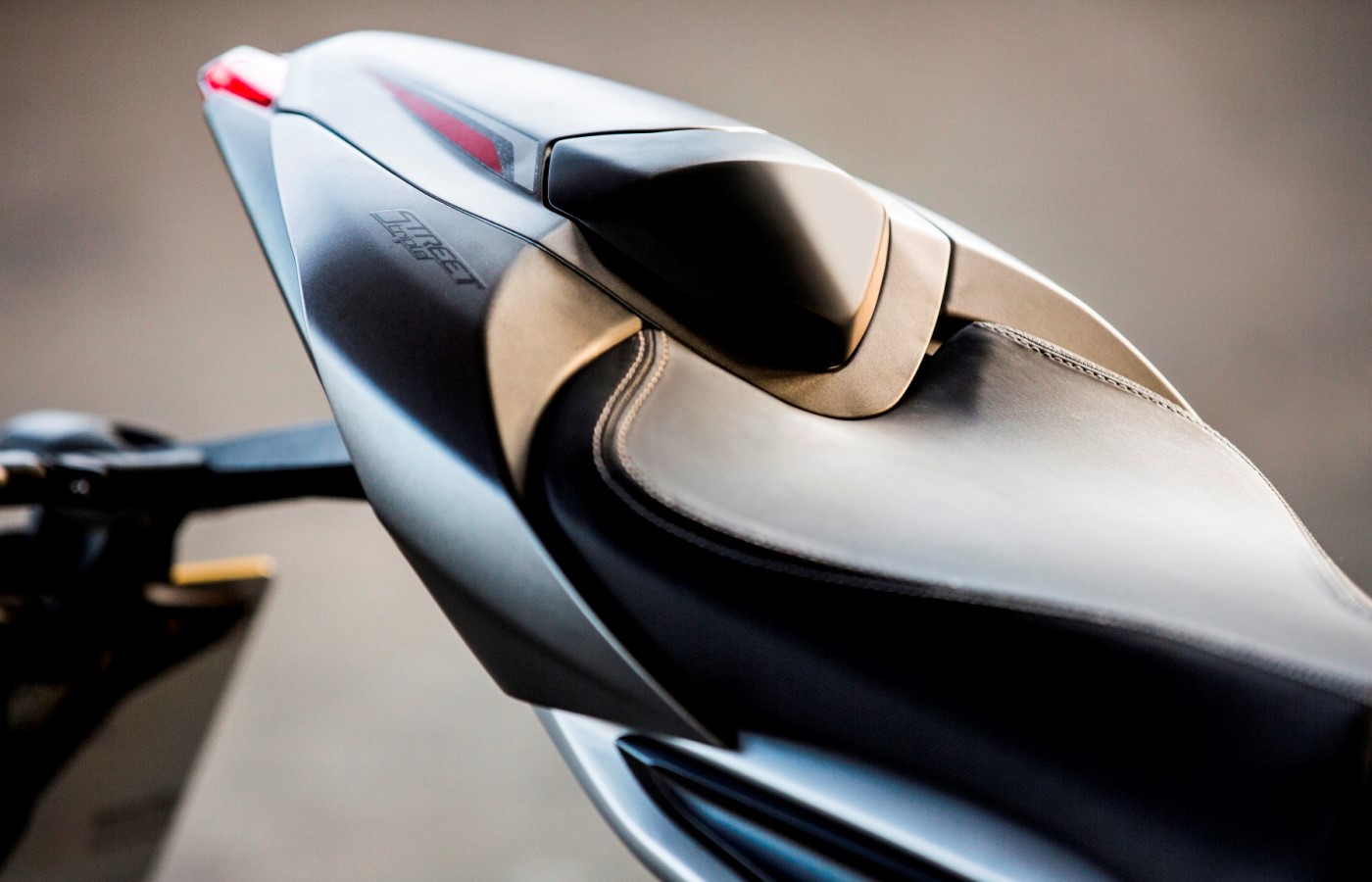
The 2018 Triumph Street Triple RS is just as sexy as a fully faired sport bike, with bits such as this passenger seat cowl and style borrowed from the Daytona. Due to technical problems that have more to do with my brain than my camera, I lost the photos I shot of the RS I actually rode, which is why you’re seeing Triumph press photos here.
By comparison, when I got on some curvy back roads and switched to “sport” mode, the Triumph suddenly seemed a little less friendly. The throttle felt just a bit snatchy and abrupt, and there didn’t seem to be a real payoff in a street riding scenario. After a while, I just left the mode setting in “road” and was happy. The Street Triple R and RS also give you the option of creating a customized rider setting. The RS also has “rain” and “track” settings that I did not try in the short time I had with the motorcycle.
If the 765 cc engine (a version of which will power Moto2 race bikes beginning in 2019) is a sweet gem of an improvement over the already great 675 cc triple, then the other bits involved in getting power to the real wheel are even better. The RS comes with a quickshifter that allows clutchless upshifts. Really, I can’t recall another transmission with such light, smooth and precise-feeling action.
You’ll still have to use the clutch for downshifts, but that’s no burden, thanks to the slipper and assist clutch. Action is light and the levers (not just the clutch, but also the brake) are adjustable for both reach and leverage. This is the sort of detail that adds to the Street Triple RS’s overall feeling of quality. Yes, it’s a lot more expensive than some of its competition, like a Yamaha FZ-09, for example, but you do feel like you’re getting not just quality parts for your money, but also an overall sense of refinement.
One of the tradeoffs you make for the track-worthiness of the RS is the stiff suspension. I definitely noticed it as I was pounding down I-95 to escape Philadelphia for some quieter back roads. I felt the jolt of each expansion joint and crevice in the old, heavily traveled pavement. The payoff was a secure feel when I finally made it to some curves where I could test the RS’s agility. I never lacked confidence, not just because of the upgraded suspension, but also thanks to the sticky Pirelli Diablo Supercorsa SP tires that come on the RS. Because the Street Triples use common 120/70ZR17 front and 180/55ZR17 rear tires, you’ll have a huge range of options, from track day tires to higher mileage sport-touring tires.
Which Street Triple is right for you?
I think this is an intriguing question. I can’t give the definitive answer, because I have not ridden all three, so I’m going on what the spec sheet and my friend Spurgeon (who also did short test rides on the S and R versions) say. Of course the real answer depends on how you’re going to use the bike, how much you have to spend and what matters most to you.
The S forces you to give up the Brembo brakes, adjustable suspension and the cool TFT dash in exchange for the lower price of $10,150. Some will envy the upgraded components too much to make that sacrifice, though in reality Spurgeon said he loved the Nissin brakes on the S and felt the suspension worked fine. The S is aimed at riders who plan to ride only on the street, and if that’s you, it’s probably a smart choice.
If you just have to have the cool factor and personalization options of that TFT display, you can step up to the R for $11,200. I suspect a lot of people will make that choice, even if they never adjust their suspension more than once.
If you’re a rider who wants to do multiple track days a year, the higher $12,500 price of the RS starts to make some sense. You not only get the top-of-the-line components, but you also get a lap timer and the additional “track” riding mode. Personally, I never used the “track” setting on my street ride, and considering how I preferred the “road” setting over “sport,” I wonder if I’d want to use the “track” setting even on the track.
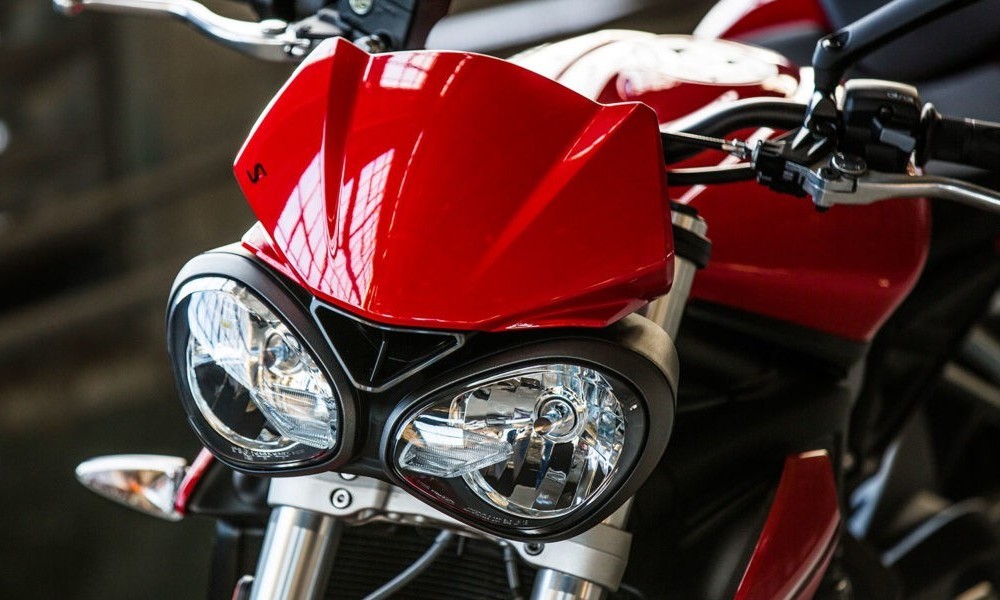
As good as the 2018 Triumph Street Triple RS is, I still miss the round headlights.
Is there another Street Triple to drop?
When rumors of the 765 cc Street Triples began to surface, there was also talk of an RT version that would include a quarter fairing for some wind protection and some provision for luggage. Given how I would use this bike if I owned it, an RT version might really be the perfect motorcycle for me. I need something I can use when I set off to cover a round of MotoAmerica races, carrying a camera and a laptop, when I have to make one of my periodic trips to RevZilla HQ or when I take off for my annual summer trip to Maine. I like the look and practicality of a half fairing, but it’s a style that’s become nearly extinct.
Maybe there is no perfect bike, but on paper — we’re back to theory again — a Triumph Street Triple RT could be just right for me. Meanwhile, if that meteor does wipe out my garage and if, for any reason, I decide I need to own just one motorcycle that can do all the things I love to do — occasional trips, daily transportation, a few track days a year — I would go buy a Triumph Street Triple RS (well, maybe an R). It may not be perfect, but I doubt any motorcycle can do all those tasks as well for less money than the new Street Triple.

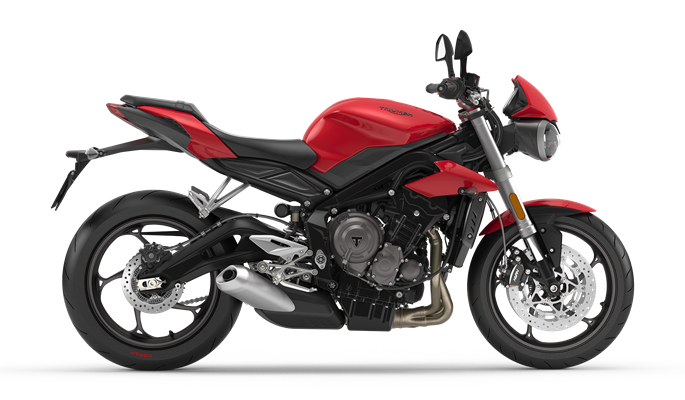
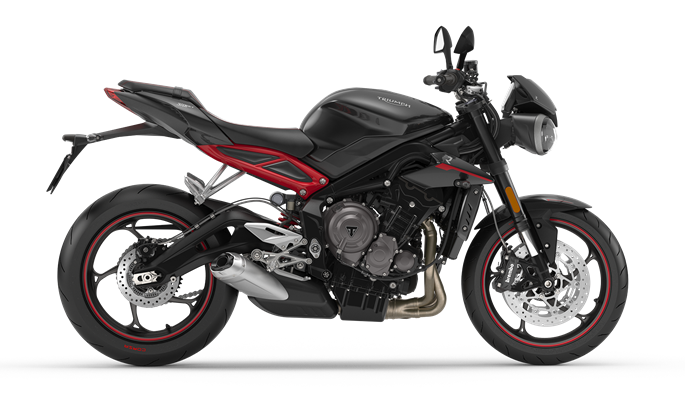
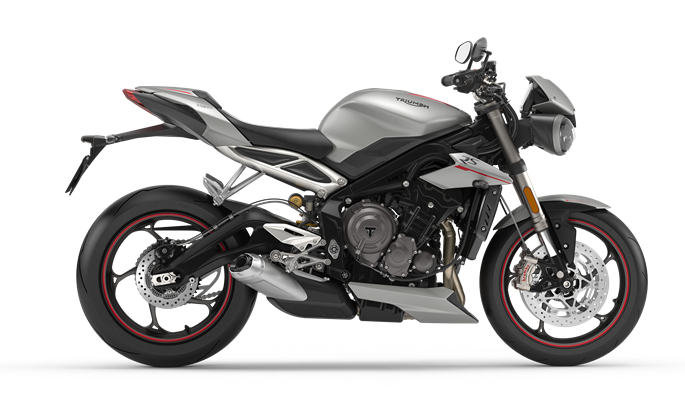
I think and RT versions would be a good idea. I also think a modern/retro versions (think XSR900, RnineT, etc., would be cool as well.
I have to think with all that Triumph has invested in this engine, including the very high-profile deal of making it the spec engine in Moto2 racing, they will use it in a variety of models. I wonder, though, if they would think that a retro would compete with the Modern Classics twin line. Triumph seems to want to keep those two worlds separated: retro-style twins and performance triples.
I bought a Street Triple as my second bike after I learned on a beat up Ninja 500. The Striple is just so sweet. Since then I have ridden other bikes and owned a few but the Striple is here to stay. I know Triumph had to update the bike eventually but there really wasn’t anything wrong to need improved.